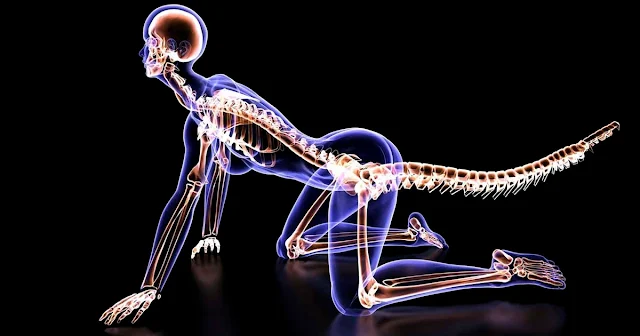One of the most remarkable changes in human evolution is the loss of our tails, a transformation that occurred around 25 million years ago. This pivotal shift not only altered the trajectory of our species but also marked a significant moment in the evolutionary history of primates. While scientists have long speculated on why humans lost their tails, the genetic cause has remained elusive—until now. A recent study published in Nature has finally uncovered the genetic factors responsible for this evolutionary change.

The Quest to Understand Tail Loss
The journey to unravel the mystery of human tail loss began in an unexpected way. Bo Xia, a graduate student at New York University, was inspired to investigate the origins of the human tailbone after injuring his own coccyx. This personal curiosity led Xia and his team to embark on a groundbreaking scientific investigation.
Through careful research, the team focused on the TBXT gene, which plays a crucial role in regulating tail length in various species. Their research revealed a unique genetic mutation within this gene, providing a major breakthrough in understanding human evolution.
The Role of Jumping Genes
A key aspect of this discovery lies in the role of Alu elements, often called “jumping genes.” These genetic elements, specific to primates, can move within the genome and cause significant changes. The researchers found that Alu elements inserted themselves into the TBXT gene, triggering a chain reaction that led to the loss of our tails.
This insertion activated a process known as alternative splicing, where RNA molecules are cut and restructured, which ultimately led to the deletion of a crucial exon. This change altered the structure and function of the resulting protein, leading to the tail loss seen in humans.
Validation Through Mice Studies
To confirm their findings, the researchers engineered laboratory mice with the same genetic mutations found in humans and apes. These genetically altered mice lost their tails, providing compelling evidence that the identified mutation plays a crucial role in the absence of tails in humans and other primates.
However, the study also uncovered a downside to tail loss: an increased risk of neural tube defects, such as spina bifida. This finding highlights the complex balance between evolutionary benefits and potential genetic trade-offs.
The Broader Implications
This discovery has profound implications not just for understanding human evolution, but also for human anatomy and health. The loss of our tails was not a random event but a genetic adaptation with lasting consequences. It illustrates the complex relationship between genetic changes and the way they shape our physiology over time.
As we continue to study our evolutionary past, these findings remind us of the intricate process of natural selection and genetic innovation that has shaped humanity. This breakthrough also underscores the power of scientific inquiry in uncovering the mysteries of our origins, offering insight into the past that can help us understand our future.
The identification of the genetic reasons behind tail loss is a testament to the persistence of scientific exploration and the ongoing quest for knowledge about our evolutionary journey.
Assuming You Have Hawk Eyes, Track Down The Secret Cow!

Undertaking such visual difficulties adds to refining our meticulousness, an expertise that demonstrates valuable in different parts of life.
How about we check whether you can utilize…

Undertaking such visual difficulties adds to refining our scrupulousness, an expertise that demonstrates useful in different parts of life.
We should check whether you can utilize your sharp vision and quickly distinguish the secret cow.
A visual test, as a type of appraisal or assessment, principally centers around assessing visual abilities and insight.
These tests are created to check a singular’s capacity to decipher and answer visual upgrades.
Stressing consistent meticulousness is significant, as improving this ability can upgrade our capacity to explore different parts of our lives.
Here are instances of visual tests in different settings:
Eye Tests: Optometrists and ophthalmologists use visual tests to assess visual perception, profundity discernment, variety vision, and fringe vision.
Normal appraisals include perusing letters on an eye outline, distinguishing shapes and varieties, and estimating the eyes’ ability to center.
Craftsmanship and Plan: Imaginative fields send visual tests to evaluate creative and plan proficiencies, including abilities like drawing, painting, visual communication, and spatial mindfulness.
Mental Appraisals: A few mental assessments integrate visual tests to evaluate mental capabilities, memory, consideration, and critical thinking.
These evaluations might include visual upgrades like examples, pictures, or images.
PC Vision Testing: In the domain of innovation, visual tests survey the exhibition of PC vision frameworks, assessing calculations and programming intended to decipher and break down visual information, like pictures and recordings.

Instructive Appraisals: Visual tests are necessary parts of instructive evaluations, assessing understudies’ visual handling abilities, visual-engine reconciliation, and visual memory.
These evaluations help in recognizing potential learning troubles attached to visual discernment.
Driving Tests: Getting a driver’s permit frequently involves breezing through a visual assessment to guarantee sufficient vision for safe driving.
This might include perusing street signs, perceiving traffic lights, and evaluating fringe vision.
The particular idea of a visual test relies upon its motivation and the setting in which it is applied.
By and large, these tests assume a significant part in understanding and assessing visual capacities, ending up important devices in different expert fields.
Go ahead and share your accomplishments in the remarks, demonstrating the time taken to find the response.



Leave a Reply